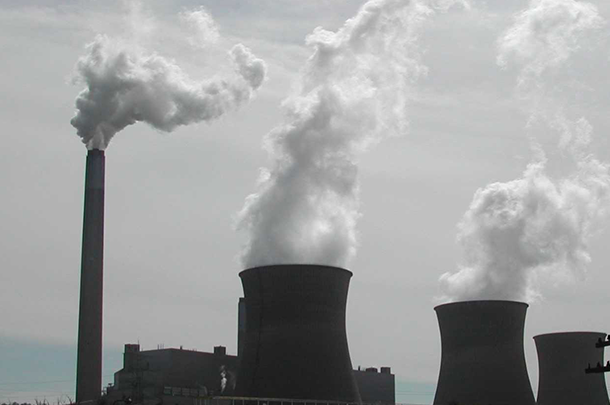How reducing CO2 benefits water use
During droughts and water shortages, power plants can put a strain on the entire water system.
Power plants provide homes and businesses with electricity on a daily basis. But plants also consume a daily essential: Water. In fact, the US electrical power industry uses nearly half of all water in the country. Power plants use water for cooling and creating steam to turn turbines, which then generate electricity. But during droughts and water shortages, these plants can put a strain on the entire water system.
In a recent paper published in Energy Policy, Engineering and Public Policy (EPP) Professors Haibo Zhai and Ed Rubin together with colleagues from Singapore Management University, have researched this conflict and come away with an insight: governmental mandates to decrease CO2 emissions could also reduce water use in the power industry.
To tame coal emissions, CCS must be retrofitted to power plants, which reduces their economic viability.
Haibo Zhai, Associate Research Professor, Engineering and Public Policy, Carnegie Mellon University
“These governmental policies incentivize low-carbon electricity generation through multiple paths, such as renewables and natural gas,” Zhai says. “This could reduce adverse impacts on aquatic ecosystems, enhance water availability for multiple sectors, and promote sustainable development.”
Different power plants use water to different degrees. Renewables, for example, such as wind and solar photovoltaic use no water, while coal and nuclear use quite a bit of water for cooling. Having a mixed fleet of power sources mitigates high water use in power, but reducing reliance on coal is one of the most prominent variables in the equation. Zhai and Rubin have found that retiring coal plants in exchange for natural gas and renewable energy sources often reduces water withdrawal.

Source: Ed Rubin
The tall chimney at the left emits CO2, which is invisible, as well as moisture inherent in the coal burned, appearing as a white cloud.
To determine how carbon reduction standards affect the power industry's water use, the team studied the Texas power industry managed by the Electric Reliability Council of Texas (ERCOT) as an illustrative case. They've found that, without CO2 emissions regulations, market volatility, especially natural gas prices, determined the amount of CO2 emissions. If natural gas prices stayed below $3/MBTU, CO2 emissions would fall because of more plants using cheaper, cleaner natural gas. However, high natural gas prices may reverse the emission trajectory.
With CO2 emissions regulations, the team found that electricity production relies more on natural gas and renewables. The regulated transition to a low-carbon electricity grid could secure the co-benefits of reduced emissions and water use. In this case, the power grid could sustainably support population growth and changes in demand while freeing-up droves of water for other sectors, like agriculture.
Switching the power industry over to natural gas and renewables is just one of many low-carbon options. Rubin points out that carbon capture and storage (CCS) can be fitted to both coal and gas power plants to reduce the tonnage of CO2 released into the atmosphere. CCS removes an impressive 90% of CO2 from emissions, although it also adds significantly to cooling water requirements.
“But CCS technology isn’t competitive with cheap natural gas and renewables under moderate carbon constraints,” Zhai says. “To significantly tame coal emissions, CCS must be retrofitted to existing power plants, which reduces their economic viability. Retrofitting some CCS to gas-fired plants also could be considered in order to promote technology learning and deeper carbon reductions.”
Ultimately, the team concludes that for the US to reach CO2 reduction goals, regulations that put a price on carbon emissions offer the stable path forward. Carefully crafted policies can provide incentives and support to help the power industry reduce emissions to mitigate climate change and to reduce water use.
